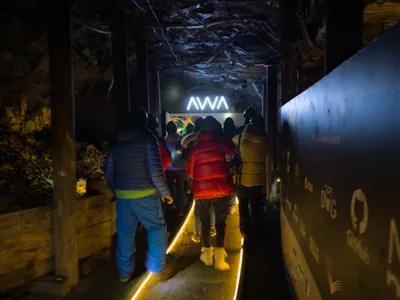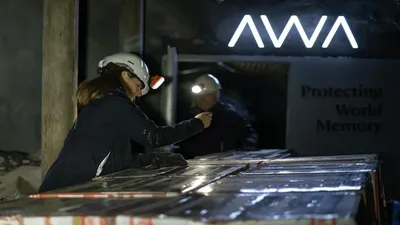

Cultural preservation is the act of protecting both tangible and intangible heritage our monuments, our traditions, our languages, even our ways of thinking so that they remain meaningful today and tomorrow. It is not about freezing culture in time but about keeping it alive, relevant, and strong enough to face change.In a world marked by globalization, climate challenges and AI, this question has never been more urgent.
The challenges
The threats to culture are real, and I see them every day in conversations with institutions around the world.
Urban development and conflict can erase historic buildings overnight.
Natural disasters destroy archives and museums in a matter of hours.
We have seen it happen: the National Museum of Brazil in Rio de Janeiro burned almost entirely in 2018, taking with it more than 20 million artifacts. In Iraq and Syria, ISIS deliberately destroyed treasures such as Palmyra’s ancient templesand parts of Mosul’s museums. Even in Europe, floods have damaged archives in cities like Cologne, where in 2009 the Municipal Archive collapsed, burying centuries of history.
Intangible heritage is just as fragile.
Languages are disappearing as younger generations shift to dominant tongues.
Traditional crafts and rituals, once part of daily life, can vanish quietly when nobody takes them forward.
William J. Murtagh, one of the pioneers of preservation in the United States, captured it perfectly:
“It has been said that, at its best, preservation engages the past in a conversation with the present over a mutual concern for the future.”
That conversation is what cultural preservation is really about—and it’s not an easy one to maintain in the face of today’s pressures.
How preservation is evolving
Preservation today is no longer only the responsibility of museums or governments.
Communities themselves are playing a central role, ensuring that heritage stays connected to the people who live it. From oral history projects to grassroots festivals, culture is being preserved not as something static, but as something alive and shared.
Technology is also transforming the field.
We now have 3D scans of ancient monuments, digital archives of endangered languages, and virtual exhibitions accessible to anyone with an internet connection. These tools don’t replace culture, but they expand its reach and give us new ways to safeguard it.
Interestingly, even in areas that some would dismiss as “just entertainment,” such as video game preservation, risks are as serious as I could call “classical environments”.
Communities of passionate hobbyists and experts have been archiving old consoles, cartridges, and digital files—often without funding or institutional backing. What they do is pure dedication: keeping alive a cultural form that otherwise risks being lost forever because technology and licenses move faster than memory.
UNESCO reminds us why this matters globally:
“Culture takes diverse forms across time and space … as a source of exchange, innovation and creativity. In this sense, it is the common heritage of humanity and should be recognized and affirmed for the benefit of present and future generations.”
I find this perspective deeply motivating. Cultural preservation is not nostalgia but a foundation for innovation, creativity, and resilience.
For a vivid example of what this means in practice, I recommend this short talk by Mandy Nicholson, which perfectly illustrates how heritage, creativity, and community intersect today:
What cultural preservation means for AWA
At the Arctic World Archive, we see cultural preservation as an act of foresight.
We work with institutions, foundations and even corporations around the world to safeguard memory for centuries to come. Our approach combines technology with responsibility: storing not just data, but stories, languages, artworks, and knowledge that could otherwise disappear.
For us, cultural preservation really means resilience. It means ensuring that future generations can still access the richness of human experience—not as something abstract, but as something alive and relevant to their own lives. If your institution is looking for ways to preserve its cultural heritage for the future, get in touch with us.


